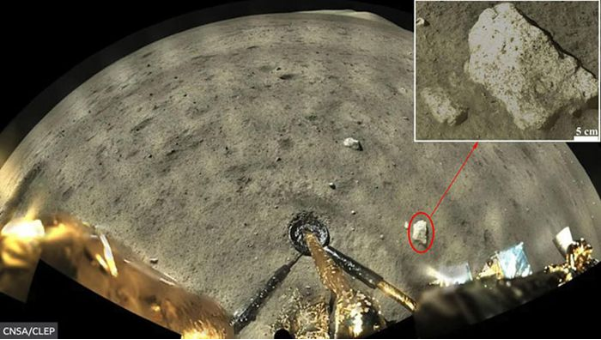
Historic Achievement: China’s Chang’e 6 Mission Returns with First Samples from Far Side of Moon
By Fiona Nanna, ForeMedia News
5 minutes read. Updated 2:00PM GMT Tues, June 25, 2024
In a historic milestone for lunar exploration, China’s Chang’e 6 probe successfully returned to Earth bearing rock and soil samples from the far side of the moon. This unprecedented mission marks the first time in history that samples have been collected from the moon’s far side, which perpetually faces away from Earth.
The probe touched down in Inner Mongolia, northern China, on Tuesday afternoon, culminating in what Zhang Kejian, Director of the China National Space Administration, hailed as a “complete success” during a televised news conference.
Chinese scientists anticipate that the returned samples, including 2.5-million-year-old volcanic rock, will offer insights into the geological differences between the moon’s near and far sides. The near side, visible from Earth, features predominantly flat expanses, while the far side is distinguished by rugged terrain such as mountains and impact craters.
The Chang’e 6 probe landed in the South Pole-Aitken Basin, a colossal impact crater over 4 billion years old. Scientists expect the samples to span various geological epochs, shedding light on the moon’s volcanic activity during its early history.
“This is a global first in the sense that it’s the first time anyone has been able to take off from the far side of the moon and bring back samples,” remarked Richard de Grijs, a professor of astrophysics at Macquarie University, Australia.
The mission represents a significant advancement in space exploration, showcasing China’s growing capabilities alongside traditional leaders in the field such as the United States.
The samples are poised to address fundamental questions in lunar science, particularly the geological processes responsible for the lunar surface disparities. Additionally, researchers anticipate that the material could contain traces of meteorite impacts, offering insights into the early solar system’s dynamics and the moon’s role as a cosmic shield.
China has expressed intentions to share these invaluable samples with the international scientific community, fostering collaborative research endeavors. The exact details of distribution among countries are yet to be specified.
President Xi Jinping praised the achievement as a “landmark” in China’s journey towards becoming a global leader in space technology. The country has progressively expanded its space program, including establishing its own space station and conducting crewed missions.
Launched on May 3, the Chang’e 6 probe completed its 53-day mission, during which it conducted core drilling and surface rock sampling operations. The successful return of these samples is anticipated to provide unprecedented insights into lunar geology and the evolution of celestial bodies.
China’s latest feat in lunar exploration not only underscores its technological prowess but also highlights the global scientific community’s collective efforts to unravel the mysteries of the universe. As the world awaits further analysis of these groundbreaking samples, the implications for future space missions and our understanding of planetary evolution remain profound.

